|
Today, 24 Carrot Writing is thrilled to reveal our logo, designed by graphic designer Russ Nemec. Our brand is built around goal-setting. 24 Carrot Writing encourages you to set monthly writing and craft goals, and to reward yourself with meaningful carrots along the way as motivation to keep moving forward. Our audience is writers of children’s books, and so, even though we are serious about those goals, we embrace playfulness. Are you intentional about setting and attaining writing goals? Join our Facebook group, browse our Writing Goals tag, download a 24 Carrot Writing Goal Worksheet, and earn those carrots! If you consider yourself part of the 24 Carrot Writing community, or have contributed to our website, we invite you to download our logo for your website. Join us on Wednesday for a post about branding for writers.
0 Comments
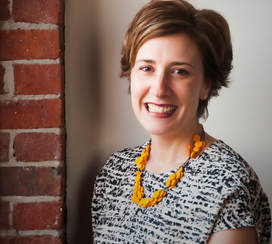 Guest Blog by Casey W. Robinson I had the pleasure of meeting Casey at the NE-SCBWI conference as she was preparing for the release of her debut picture book, Iver & Ellsworth (Ripple Grove Press, 2018). Since then I’ve been to her launch and watched the buzz of her picture book grow. We are thrilled to have Casey join us to share the lessons she learned as she introduced her debut book to the world. Welcome Casey! 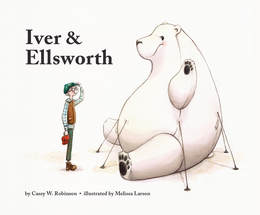 My debut picture book, Iver & Ellsworth (Ripple Grove Press), came out in May and I held two debut events to celebrate: a morning reading at the Harvard Coop Bookstore in Cambridge, MA followed by an afternoon book launch party at the Silver Unicorn Bookstore in Acton, MA. As exhilarating as it was to celebrate, I found the process of planning and anticipating these events to be a little daunting! For those of you who are looking forward to, or are in the midst of, planning your debut launch, I share some lessons learned. I’M GLAD I …
I WISH I HAD …
When it was all over, I asked my daughters to tell me their favorite part of the weekend. I expected them to say “Cookies!” They said it was seeing me so happy. “You had your really big smile on all day long, mom.” Don’t forget your book, your story, your day will also be special and significant to others who get to be a part of it. Whatever the format, whatever the size, mark this moment in time and celebrate together. HAVE FUN. You only get one debut! To learn more about Casey please visit her at www.caseywrobinson.com. To order a copy of Iver & Ellsworth go to www.indiebound.org/book/9780999024911.
Thanks for joining us Casey! 24 Carrot Writing is pleased to host Andrew Jenrich, Director of the Taft Public Library in Mendon, MA. All four of us have benefited from Andrew's comprehensive knowledge of the publishing industry, as well as his ability to place "just the right book" into our hands (as well as the many library patrons' hands!). We hope you'll find his perspective on what he's acquiring, and what he hopes to acquire in the future, helpful in your writing process. 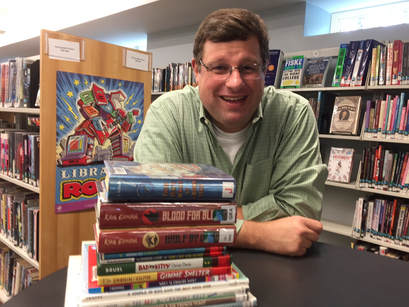 Guest Post by Andrew Jenrich As Director at the Taft Public Library one of the most rewarding tasks I have is developing the library’s book collection for children and young adults. That’s not to say it isn’t a daunting job, especially since so many new titles release weekly. If there is any frustration in the collection development work I do, it stems from the nagging feeling that I’ll forever be chasing the publishing game and will never quite catch up. We are a smaller library and, since the shelf space in our library is limited, I realized long ago that I would need to be particularly selective about what winds up on our shelves. So, what determines the choices I ultimately make for our library? What catches my eye and peaks my interest enough to convince me to part with the library’s dollar? Those are interesting questions. I do know the criteria I use for evaluating a board book vs. a chapter book vs. upper-level juvenile fiction for purchase are different. There is no one method I employ. And there probably shouldn’t be. Audiences for each format vary and publishers have become very savvy about what appeals to different age groups. The challenge for me is in anticipating what our patrons will want of what does get published. Some of the selection process is straightforward – series books for characters like Fancy Nancy, Pinkalicious, Pete the Cat, and Dog Man always circulate and they, along with series like Wimpy Kid, I Survived, and Spirit Animals take up a fair bit of space on the shelves. Add in books by renowned authors – your Rick Riordans, Mo Willemses, J.K. Rowlings, and Kate DiCamillos – and that’s a significant portion of the collection. But having those titles does not mean every interest of our library patrons has been met. There is still plenty of room for diversifying, for growing the collection beyond the core popular titles. Below is a synopsis of what I look for when selecting titles for the Children’s and Young Adult collections at our library. I’ve broken it down roughly by age group and, within each entry, I’ve tried to highlight some of the current trends I’m seeing and, where possible, pointed out the genres, subject matter, and storylines that seem too prevalent in some of these categories. 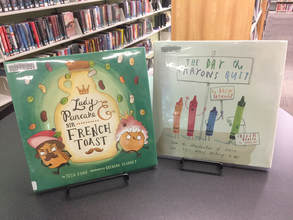 Board Books and Picture Books I’m a fairly visual person so I admit that the first thing that draws me to a board or picture book are the illustrations. They don’t need to be a certain style. In fact the good news in publishing for the very young is that there are many styles illustrators can employ that work effectively. Sure there’s a bit of mimicry here and there, but there are plenty of illustrators whose style is unique and distinct. So, yes, I’m drawn to the illustrations. That said, there’s nothing more disappointing than a picture book which delivers on the illustrations but is weak on storyline and content. The words do matter. When I was a Children’s Librarian and hosted storytimes I have to say I gravitated to titles with less text (kids can only sit still for so long). The books I liked most in those situations were the ones that “brought the silly.” Mo Willems, Jules Feiffer, Jon Agee, and Jan Thomas were always a hit. If a book could bring the silly and convey a lesson, well, all the better. Some books with more text did work during storytimes (Tomie DePaolo’s Strega Nona and Michelle Knudsen’s Library Lion worked far better than I imagined, Marla Frazee’s books were great too), but those instances were rare. What have I seen too much of in storybooks the last few years? Dragons, dinosaurs, princesses, penguins, mice, and bears. Don’t get me wrong, we still purchase titles with all of the above precisely because they circulate, but there’s entirely too much of it. And I do like anthropomorphism (Valeri Gorbachev and Peter Brown’s humanized animals are favorites of mine), but give me characters, animal or otherwise, I don’t normally see. Give me Lady Pancake, Sir French Toast, and Crayons that quit. I’ll likely take notice. Easy Readers and Early Chapter Books Some authors like Jan Thomas and Mo Willems have successfully moved into easy reader territory and we carry their titles. What’s nice is they continue to do work that isn’t text-heavy. I’ve found that text-heavy easy readers have a very limited appeal. If a child is looking for more text often they just move up to early chapter books like Nick Bruel’s Bad Kitty series or Doreen Cronin’s Chicken Squad books. Illustrations still matter in easy readers and early chapter books. In fact more and more books from both these categories seem to be taking a cue from graphic novels incorporating full page panel layouts, word and thought bubbles and other comic book devices. Scholastics’ line of early chapter books called Branches does this very well. They’re intended as a bridge between leveled readers and regular chapter books. Kung Pow Chicken, Monkey and Me, and Owl Diaries are all Branches titles that kids gravitate to here at the library. There’s plenty of text, it’s just that it’s often presented in comic book format with splashy engaging illustrations. What would I like to see more of in easy readers and early chapter books? I’d like to see more nonfiction easy readers and rebus readers where pictures occasionally take the place of common nouns throughout the story. Based on patron requests there’s a demand for both. I’d also like to see early chapter books with a bit more heft and content to them. The great thing about series like J.C Greenburg’s Andrew Lost or Osborne’s Magic Tree House is that you learn something in the process. Juvenile Fiction With Wimpy Kid, Big Nate, and the Dork Diaries series you’re seeing hand-drawn diary and graphic novel techniques infiltrating juvenile (chapter book) fiction too. It’s clear publishers think kid culture is much more visual now and, based on readership of those series and others, it’s hard to argue they’re not right. We purchase all of the above and countless other series. Realistic fiction titles (school stories, family stories) seem to be on the increase due to the popularity of the Wimpy Kid and Dork Diaries books. Most juvenile fiction series (and, believe me, publishers are obsessed with making everything into a series now) fall into the fantasy and adventure categories though. I loved the Harry Potter series but so many publishers started to roll out fantasy series during and after Harry hoping to “catch lightning in a bottle” that the result was a fair bit of forgettable fiction, though authors like Rick Riordan, Brandon Mull, and Pseudonymous Bosch capitalized. Bosch’s Secret series and Mull’s Fablehaven books are both very worthy and most everyone knows what a hit Percy Jackson has been with younger readers. What’s lacking in juvenile fiction? I don’t think there are enough mystery and compelling historical fiction titles written for preteens. Every so often a series like I Survived stokes the imagination of young readers, but it doesn’t happen enough. More sports novels for girls would be helpful too. Mike Lupica, Tim Green, and John Feinstein write excellent sports novels, but they feature boy protagonists in male-dominated sports. 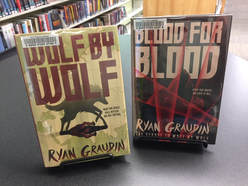 Young Adult Fiction In my twelve years at the library no one area has grown so much as young adult fiction. The number of titles has grown and the category itself has matured. I think YA fiction suffered under the assumption that much of it was bleak and focused on hyper-dysfunctional families and relationships. There is a percentage of it that still does (and dysfunction provides drama), but I see authors taking more chances with genre now. Yes, YA literature had its vampire and werewolf phase (thanks Twilight) and it still clings desperately to its Hunger Games-inspired dystopias. Veronica Roth’s Divergent series, Alexandra Bracken’s The Darkest Minds, and Neal Shusterman’s Arc of the Scythe series all mine this territory and do it fairly well. But I like when an author takes an even bigger chance like Ryan Graudin does in Wolf by Wolf and its sequel Blood for Blood, novels that take place in Nazi Germany and feature a girl protagonist who is also a shape-shifter intent on assassinating Hitler. It sounds like a lot to swallow, and it is, but Graudin pulls it off beautifully. If an author is going to imagine an alternate world I like it when they go all in. Thankfully more of that is happening. There is still plenty of room, of course, for realistic and topical teen fiction. I’ve been happy to see more teen mystery and suspense titles recently and it’s nice when historical fiction series like Laurie Halse Anderson Seeds of America books receive recognition and a devoted readership. I’ve also been particularly pleased that recent multicultural titles like Angie Thomas’s The Hate U Give and Tomi Adeyemi’s Children of Blood and Bone have found a wider audience. In truth there is so much good stuff out there now for children and teens to enjoy. Some of the best work being done right now across the juvenile and teen book landscape is in graphic novels. Shaun Tan, Gene Luen Yang, Raina Telgemeier, Noelle Stevenson – I could go on ad nauseum about the brilliant work they’re doing. Perhaps another time. Right now I have orders to place, so if I could kindly ask that publishers sit back and take a short break? I really need to catch up! The Taft Public Library is located at 29 North Avenue in Mendon, MA.
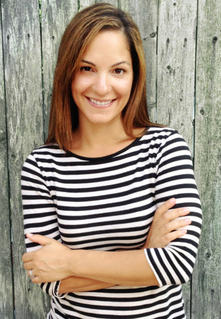 Guest post by Anika Denise Launching a new book into the world is worthy of a grand celebration. Whether it's your first book or your fiftieth — it's important to mark the occasion with fanfare. Throw a bash! Invite your friends! Revel in the moment! You earned it. But successfully launching a book involves more than just party planning. The work of finding and connecting with readers who will be motivated and excited to buy YOUR book ideally begins months and months before publication. From building your website, to networking with educators, to creating extension activities, to printing swag, to blogging, to tweeting, to baking cupcakes and ordering balloons — managing the myriad tasks associated with book launches can be overwhelming, especially for debut authors. After my first two books entered the world without much fanfare or support, it hit me that I had a marketing degree and experience in promotion. So, um…why wasn’t I putting those skills to work launching my books? When my picture book Monster Trucks was acquired, I made a point to keep track of all my promotional tasks and when I’d completed them; as well as what worked, what didn’t, and what I’d learned from the process. My documented “from-book-deal-to-publication” experiment eventually became the basis for a marketing workshop: BEYOND THE BOOK LAUNCH PARTY, to help authors create and execute their own book launch strategies. The response I hear most frequently from workshop attendees is: OH-MY-GOSH-I-SO-NEEDED-THIS! And I tell them: so did I. To stay organized (and sane), l needed a promotional checklist I could follow for each new book. And hopefully, in being more methodical and digging deeper into my book’s unique content, I’d engage more readers, generate greater awareness of my “brand” as an author, and boost book sales. So… did it work? YES! While there are many variables that affect how a book sells, and I don’t have scientific data tracking back each promotional activity’s effectiveness, I do have my royalty statements. And the titles I’ve launched with coordinated marketing attention have done better. Significantly. With all the hurdles to surmount on the path to publication, a published book is like a tiny miracle. That’s why I try to do my small part in giving my books their best chance at success. And why I’m happy to share what I’ve learned. Here’s the plan I follow. It includes advice on how to reach readers and considerations to explore when allocating your precious promotional budget. Use it. Share it. And feel free to reach out with questions or suggestions. ANIKA’S BOOK LAUNCH TIPS & TASKS TIMELINE Before the book deal... * Create an author website (include an e-mailing list sign up) * Network with the children’s book community – in person and online * Be active on social media, but give thought to AUDIENCE when choosing how and where to spend your time. Are you targeting parents? Librarians? Teens? Where does your audience spend the most time? * Don’t just talk about YOU; use your channels to AMPLIFY OTHERS Pro-tip: Focus this time on establishing a professional author presence and getting to know your tribe. Attend conferences. Introduce yourself to local librarians. Be visible and make friends. And YES, include a mailing list sign-up on your site, even if your book isn’t out yet. Your e-mail list will be the foundation upon which you build a direct relationship to readers who opted-in to learn more about YOU and your books! Just after you've signed the contract... * Make a list of 8-1o topics and/or themes that are in your book * Research and identify blogs, websites, and organizations that ALSO care about the topics you listed * Are there opportunities to get involved? Guest post? Volunteer? * Take this time to introduce yourself and build relationships * Always begin with what you can do for them – not what they can do for you Pro-tip: Meaningful connections grow out of equitable partnerships. Begin any pitch with what you can bring to the table, rather than simply asking them to promote your book. Here's the list I made for Starring Carmen! The goal of this exercise is to find readers based on commonality and shared interests. One great example of this for me, was Boys & Girls Clubs of the Midlands, in South Carolina. The tagline for their after-school performing arts program is: Be inspired! Be talented! Be creative! This could easily be the tagline for Starring Carmen!. By offering to do presentations at their locations, I connected with both the gatekeepers (arts educators at BGC) and young readers — who, because of our common interests and values, are likely to be interested in reading the book.
12 months prior to publication... * Set your promotional budget * Identify book festivals and speaking opportunities that line up with your pub date; make note of deadlines for applications * Consider partnering on promotion with other authors who have books in your genre or release year like the Electric Eighteens * Look for HIVE MARKETING opportunities and book discovery platforms, such as Curious City's Bunk Reads & Trick or Reaters Pro-tip: You can find yourself down a rabbit hole, spending large sums of money on book promotion. Deciding how much you are willing to spend and prioritizing which strategies are most worthwhile for your book is important. Ask yourself, am I going to enjoy doing this? And is this likely to move the needle on books sales? 9 months prior to publication... * Outline your reading guide or activity kit * Plan and draft blog posts related to the themes in your book (Check out Sarah Albee's and Betsy Devany's blog for examples of fun, engaging content-related blogging.) * Check in with the in-house publicist to review the marketing plan for your book Pro-tip: Publicists are BUSY. Each new season brings a fresh crop of books to promote, and the window for promoting an individual title can be limited. What you can expect varies from house to house, and book to book. So it's important to ask (kindly) what they have planned, in order to determine what you'll need to do yourself. In my experience, the more willingness I show to roll up my sleeves on publicity, the more support and attention they will jump in and give. 6 months prior to publication... * Design and print book swag (if the cover is final) * Schedule a cover reveal * Reach out to bloggers to arrange a blog tour * Contact stores to schedule signings * Connect with schools and offer presentations * If you are considering a book trailer, make notes on a treatment and hire your vendors Pro-tip: Creating a high quality book trailer can easily blow your promotion budget, and won't (necessarily) sell more books. My strategy has been to find creative ways to produce them, at low cost. For Baking Day at Grandma's, we kept costs down by working partially in barter, and shooting it all in one day. For Monster Trucks, my local school librarian asked one of her students to create the book trailer as a part of a school library project. Consider getting local schools involved and/ or hosting a reader-produced trailer contest. Author (and book promotion wizard) Josh Funk creates his own book trailers. I love Josh’s trailers because they showcase his humor and brand personality, and really make you want to run out and read the book. If you have mad iMovie skills (or know someone who does) try putting together a trailer yourself. 3-4 months prior to publication... * Send Advance Release Copies (ARCS) to colleagues, friends, and family, and ask them to consider reviewing and sharing your book online * Create a “press kit” section on your website with your blurb bio, high-res book cover, author photo, and event poster template * Send a draft of your reading guide/ activity kit to your publisher for review and approval Pro-tip: As with trailers, a great deal goes into drafting and designing a quality classroom guide. Your publisher may create one for you, but if not, you can outsource to an expert. Not sure where to begin or what a discussion guide looks like? Scholastic.com has guides readily available for download. Spend some time familiarizing yourself with the format. 1 month prior to publication... * Finalize contests and giveaways (Goodreads requires 7 days in advance) * Design a graphic for both your blog tour and store appearances, with dates and locations * Share positive reviews on social media and add them to your website * Finalize details and send reminders about your LAUNCH PARTY! * Pop the Champagne (or sparkling cider) and enjoy! Pro-tip: Consider going LIVE on Facebook during a portion of your book talk or reading, to amplify your launch party's reach. And my final pro-tip? Don't get so caught up in promotional tasks that it keeps you from doing your first job, which is to write amazing books. Strike a balance. Set a few hours aside each week for book launch planning. Use this timeline as a guide, but do what works best for you. Additional Resources: Curious City facilitates children's literature discovery by creating marketing tools that engage readers with story. They create activity kits, write and produce book trailers, host book discovery platforms — they've even planned tours for fictional bands! — all for the noble purpose of helping kids and books "meet." Find out more at http://www.curiouscity.net and this post which includes a link to Curious City's "Creating Discovery" worksheet, which I highly recommend downloading and completing. Author Gaia Cornwall also designs and creates super-cute (affordable!) author swag and book trailers. Check out Marcie Colleen's awesome Teacher’s Guides. And finally, here's a list of upcoming book festivals from Book Reporter. Anika Denise a former marketing and public relations executive. She’s also the celebrated author of many books for young readers including Lights, Camera Carmen!, Starring Carmen!, Monster Trucks, Baking Day at Grandma’s, Bella and Stella Come Home, and Pigs Love Potatoes. In 2019, to coincide with Women’s History Month, HarperCollins will publish her forthcoming picture book, Planting Stories: The Life of Librarian and Storyteller Pura Belpré, illustrated by Paola Escobar. Other titles coming in 2019 include The Best Part of Middle, illustrated by Christopher Denise, and The Love Letter, illustrated by Lucy Ruth Cummins. To learn more about Anika’s books and workshops, visit her website at anikadenise.com. 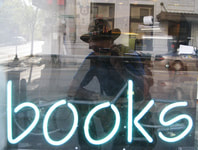 We are pleased to welcome Deb Shapiro, the president and founder of Deb Shapiro & Company, a public relations, marketing and media services and consulting business focusing on authors and books. A former journalist and bookseller with an MA in children’s literature, Deb worked for nearly 15 years in book publishing, creating and executing publicity and marketing campaigns for publishing houses large and small before launching her own company. She is also an instructor at the Columbia School of Journalism’s graduate publishing course and an active volunteer with several literacy organizations. She lives in Washington, DC with her daughter. We are pleased to have her here at 24 Carrot Writing to share her marketing experience and knowledge with us. What sparked your interest in working in publishing? I’ve always believed that if you can read well and write well, you have the tools to succeed in life. I knew teaching wasn’t the right fit for me, so I thought that if I were involved in the process of creating good books to put into the hands of young readers, I could help level the playing field for all kids and help spark a life-long love of story and learning. At 24 Carrot Writing, we focus on children’s literature. What is the biggest challenge children's debut authors face in marketing their books? There is a lot of white noise out there, especially online, and trying to break through it is a challenge. But most of that white noise is created because people are doing what they “think” they should do, either because it’s what others are doing and they believe that’s what they should do too, or because they just don’t know what to do. Thinking about who your audience is, and what your strengths and interests are in relation to the book, will help you craft a plan that will be more relevant and effective, and that in and of itself can help break through. It’s also important to realistically think about who your audience is. Some books are going to gain more traction in the educational marketplace than the consumer marketplace and visa versa, and you need to be open and accepting of that because if you are, then you can better assess how best to position the book and yourself to reach that audience. Many debut authors do not know where to begin in marketing their upcoming books. What are some essential first steps debut authors should take in preparing for their book’s release? Patience. Patience. Patience. Rarely do books take off within the first few weeks of publication. It’s a slow build as reviews come in and are shared and the books are put into hands, read, and talked about. There is a wide and varied window of opportunity for a book to find its way. Authors need to look at the process (or the adventure) as a marathon not a sprint; they need to be strategic, thoughtful, creative and realistic in how they consider what will help readers—or the people who put the books into these readers’ hands—understand the book. What can a pre-published author do to prepare themselves for book marketing? Much the same as what a debut should do: be mindful of your audience and what is in your comfort zone as you consider any promotions. Your audience can see through the efforts if they are not authentic, so be true to yourself, and hard as it may be, try not to compare what’s being done for other books to what is or isn’t being done for yours. In the age of social media it can be difficult and disheartening at times, but try and remember just because you may see a lot of activity it doesn’t mean that it’s effective, that readers are responding, or that any of it is translating to sales. Focus on yourself and your book. When you approach marketing a children’s book, be it picture book, MG, or YA, are there certain aspects or features you look for (i.e., timely theme, target audience) that shape your marketing approach? All of the above. One of the things I love about marketing and promoting books for kids and teens is that there is no one right way to do it. What’s key is looking at each book and author and understanding what they separately and together bring to the table, and then assess how those attributes fit into any trends, timely events, etc. and then position the book and author accordingly. What are the differences in the strategies employed to market a PB vs. a MG or YA? In some ways not much. At the heart of the process, it’s about having a good book to work with. That being said, with YA you’re marketing more directly to the book’s core audience--the teens; with picture book and MG you’re marketing more to the people who will put the book into the readers’ hands—parents, booksellers, teachers, librarians, grandparents, aunts, uncles… Each of these adults looks at a book differently so you need to adjust how you position the book to them accordingly. For example, an educator may want to know how this book could be relevant in the classroom, and a bookseller would want to know what kind of reader it will appeal to. In your experience with marketing books, what are some of the most effective publicity approaches you have seen? It all comes down to my mantra about being true to the book and author and understanding the audience. We Were Liars by E. Lockhart I think is a great example of checking all of these boxes—and it started with a fabulous read. The concept of the book became the campaign—every element wove in the intrigue of the mystery involved as to who was or wasn’t telling the truth. Another example would be Little Elliot and the Big City by Mike Curato; Little Elliot is such a delightful, endearing character and he was branded through a strategic bookseller, educator campaign so by the time the book hit shelves, he was loved and recognized by the people putting the book into readers hands and they couldn’t wait to introduce him to their customers. I often see other campaigns try to mimic those that are most successful but they always fall short. Books--like authors, like people--are their own unique entity and should be treated as such. It’s helpful to look at past campaigns to see what worked, but then look to see how that element might translate and be appropriate for you. Social media plays a large part in many authors' publicity efforts. In your experience, have you found social media platforms, such as Twitter, Facebook, and Instagram, helpful in promoting a new children’s book release? Are some social media platforms more successful than others in increasing a book’s visibility and, ultimately, sales? For the most part, effectiveness comes down to the person, their approach and their authenticity more than the platform. Authors should not be made to feel that they have to be on social media; they should only do it if it’s in their comfort zone and they feel they have something to say and something to contribute to the conversation. I will say though that when thinking about platform, think about the audience of your book(s) and see where that audience may be spending more of its time. What are some of the biggest pitfalls you see authors experience in marketing their work? Is there anything you consistently recommend they don’t do? Don’t Google yourself, don’t monitor your Amazon rankings, don’t compare yourself to others or compare your efforts to other’s efforts. Do communicate with your publisher, even if they don’t appear to be listening, keep them posted on what you have going on, and your ideas. Be patient with yourself and the process. Be true to yourself and your book. Many authors team up for book events. What are the pros and cons of being part of a multi-author event? Pros: you can be introduced to new readers through the other author’s fan bases; it can be more fun and less daunting to be with others, too. Cons: disparate or clashing personalities. It’s important to make sure that the participating authors are all tapping into a similar age-range and that each of the participating authors plays nicely in the sand box with others. Many authors spend much time and expense having “swag” printed for their book launches and events. Do you feel that swag, such as bookmarks, magnets, postcards, etc., is worth the effort and expense, or do you feel the book can stand on its own? It all depends on the book, the author, the swag and the means of getting it out there. If you’re creating swag, make sure it’s something useful, it represents the concept of the book in some way, is a helpful reminder to the person who receives it of what the book is about, is age appropriate for the book/audience, and that you have a plan to distribute it. If you do a lot of school visits, for example, book marks or postcards can be useful because not every student is able to buy a book, and this way you have something to hand out so that each child can get something. A recent trend in marketing books is the book trailer. Do you believe that book trailers have a positive impact on a book’s success? Are they more effective based on the target audience, such as picture book vs. middle grade vs. YA? Trailers have become one of the contributors of the white noise out there. What can backlist authors do once the fervor of the launch has settled to continue to market and maintain interest in their books? There is no general, one right answer for this one. It’s all about looking at the book, the audience, and the author to assess what will keep momentum going. Any other final thoughts you’d like to share with regards to the marketing and publicity of children’s books? I am asked time and again about doing cover reveals (sort of the new book trailer), and while it used to be an opportunity that could raise awareness in advance of publication, they have now been done so much that people really don’t take notice and it’s really not worth the effort to put one into place. Timing is key with so much of online efforts, and doing too much too far in advance of publication can be detrimental—by the time your book is out it seems old hat. With cover reveals and with book promotions in general, time and effort is better spent finding opportunities that will make sense for you and your book rather than looking to do something just because you’ve seen it done. Thank you, Deb, for sharing your book marketing expertise and insights with us! 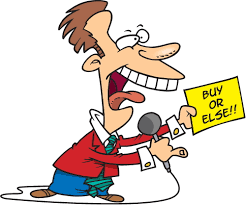 Guest Blog by Trisha J. Wooldridge It’s a busy day, the small staff is trying to help more customers and do more projects than is humanly possible, and New Author flags someone down. “I just published my new book and I’d like a signing next Saturday. How many copies do you want to buy? I’ll give you ten per cent off the cover price.” Insert screeching record-needle scrape. Bookseller gingerly takes the book that’s been thrust in their face. The cover art is... “interesting”, the title font looks hand drawn, and at first glance the bookseller has already found three grammar errors on the jacket copy. There is no barcode nor a price, and the spine isn’t centered. “So how many copies do you want to buy? I’m a local author!” Some version of this happens frequently at the store where I work. We have a fairly large local author selection, because we try to support our community. A fair number of those books hurt the appearance of the section because of bad covers; many cause confusion with staff when hand-written price stickers fall off in humidity; and some customers walk away from the entire section when they find books riddled with errors. This makes most bookstores wary about working with “local authors” or “indie authors.” Most traditional authors don’t contact us; we get their information from publishers. Some newer authors with traditional publishing houses do contact us—usually after first contacting us via email or on the phone, as our website suggests (ALWAYS check bookstore websites for preferred communication about selling books or doing events)—and that interaction is usually simple: “Hi, I’m a New Author, and I’ve got a book coming out in a few months with Publisher, would you be interested in hosting an event? Here’s the information on the book.” New Author hands Bookseller a bookmark, sell sheet, card, or Advanced Reader Copy. Bookseller can easily order books from a distributor or publisher at their usual discount of 45-55% off cover. There is plenty of time for the bookseller to promote the event. You’ll notice I’ve tied my examples with events. An event sells books. While most people who go into bookselling love books, they can’t be a bookseller without making money. Bookstores have limited space. A book on a shelf needs a reason for people to get engaged. An event is meant to get readers engaged. So, if you want a bookstore to consider carrying your book, see if they’ll consider hosting an event for your book. Here are the most basic things a book store needs to consider your book event:
Boiled down to a “simple” answer, if you want a bookstore to carry your book, be a professional the bookstore wants to work with. Success of your book and book event is a success for the bookstore. When thinking about approaching a book store, have in mind what will make this partnership fun and profitable for all parties involved. 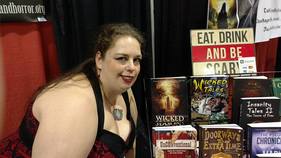 Trisha J. Wooldridge is the events coordinator for Annie’s Book Stop of Worcester in Worcester, Massachusetts. When not wrangling authors, publicists, electronic media outlets, and newsletters, she also writes and freelance edits. She’s edited over fifty novels; written non-fiction articles, poetry, and short stories for a variety of publications; and under her child-friendly name of T.J. Wooldridge, published poetry and three middle-grade novels. Find out more about Trisha at www.anovelfriend.com.
NOTE: Trisha is currently working on Annie's Book Stop's Annual Small Business Saturday event. They host a group of authors for a day of readings the Saturday after Thanksgiving. Small Business Saturday is an event created by American Express where cardholders get extra bonuses for shopping local at participating stores. Annie's Book Stop shares that extra promotion by inviting local authors in to spotlight their work, and this year they are focusing on children's book authors.
Annie's Book Stop of Worcester is at 65 James Street, Worcester, MA, and will host authors from 12:00 PM - 6:00 PM with scheduled readings, Q&As, and snacks through the day. If anyone is interested, shoot Trisha an email at [email protected] or [email protected] (both come to the same place; one is easier to misspell than the other). 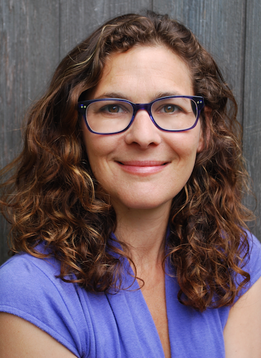 Guest Post By Alison Goldberg As I started thinking about this post, I asked critique partners and friends for their questions about promoting a debut picture book. In addition to nuts and bolts questions about swag and event planning and blogs, one person asked: What if you (secretly) don’t want to promote? And I kept thinking about this question, since it underlies a lot of conversations I’ve had with writers on this topic. For many of us, creating a promotion plan for a first picture book can feel intimidating, at times overwhelming. It requires diverting precious time away from writing and/or illustrating. The activities involved may demand a different set of skills from the ones honed to polish a manuscript for publication. Just the idea of marketing ourselves can be challenging, and for the introverts among us, particularly exhausting. My first picture book, I Love You for Miles and Miles, released from Farrar, Straus and Giroux on December 26, 2017. During the past year I’ve tried several different strategies to promote my book. I have also not tried several different strategies to promote my book. There are countless ways to tackle book promotion. As I reflected on this question, I realized that a big part of making this process feel manageable, accessible, and worthwhile—something that I actually wanted to do--was to come up with my own goals for success. Book promotion isn’t just about trying to sell more books, but I think sometimes the resistance to promotion is the feeling that’s the only thing we’re supposed to be doing. But there are so many other reasons to leverage the opportunity of a book launch to promote--especially as a debut. It can be empowering to redirect our focus to goals that support our ongoing careers as published authors, help us develop new skills, strengthen our communities, and connect us to kids, families, librarians, booksellers, and teachers. Just like each of our writing journeys will vary, each of our book promotion paths will vary. What do you hope will happen when you send your new book out into the world? Who do you want to share it with? Who do you want to connect with? What skills do you want to develop? What steps can you take with your debut that will help you launch your next book? How can you use the opportunity of this book launch to support your community? 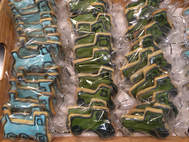 When launching a picture book debut, I think it’s worth taking the time to step back and come up with book promotion goals that feel true to you. As an example, I share my book promotion goals below. Your plan can be as big or as small as you want it to be. It can involve a whole team of people or just a few. It can involve lots of cookies or no cookies at all. The important part is that it includes what you want to do. My Book Promotion Goals: 1) Develop infrastructure for my writing business As a new children’s writer, I had invested a lot of time and resources in developing my craft, far less in developing my writing business. One goal was to use the opportunity of my launch to create more business infrastructure. What did this look like for me? I overhauled my website, and created contact lists for email outreach to friends and family and a postcard mailing to bookstores and libraries. All of this was pretty time consuming, and the website was resource intensive, but these things will be in place for my next book launch too. 2) Tell my story as a debut At every step in my writing journey I have read the profiles of writers, often in the form of blog posts hosted by other writers. Another goal I had was to tell my story as a debut in order to give back to this supportive children’s writing community with content of my own. This was easy to do, free, and great preparation for a media interview request when it came along. (Here are those posts and interviews.) And telling my story as a debut connected back to my goal of developing business infrastructure. I wanted to establish a greater presence online to make it easy for potential readers, reviewers, and editors to learn more about me as a writer. 3) Connect with my local bookstores and libraries. I love my local indies. I love my local library. A big part of my excitement for launching my book was the chance to connect with and support bookstores and libraries in this new role. I prioritized events in these venues and this has been a highlight for me--a chance to get to know more bookstores in my area and share my book (and crafts and cookies) with kids and families. 4) Expand my writing community I found that launching a debut was a terrific opportunity to meet more children’s writers. I joined an amazing debut group, Picture the Books, and connected with other writers and illustrators with 2017 picture book debuts. We shared information and strategies, circulated advance copies, and supported each other throughout our debut year. I also connected with agent-mates with 2017 release dates and a broader community of writers on social media. I knew that my events would be more fun for me if I planned them with other picture book creators. Expanding these networks helped me to find authors and illustrators to team up with. 5) Support an issue I’ve been involved in the Campaign to End Childhood Hunger for decades and saw the opportunity of my picture book launch as a chance to raise some money and exposure for this work. I included this information in my book trailer and on my website, and I’m exploring ways to build this support into future events. 6) Experiment Finally, I had a goal to experiment with strategies throughout the year, to stretch myself and learn about a variety of tactics for my next book launch. For example, even though I decided I wouldn’t plan school visits for this release, I volunteered to lead a storytime at my children’s former preschool to learn more. Since I was curious about the potential reach of a book trailer, I went to conference workshops for advice and ended up working with an animator to make one. I’ve never participated in a book festival before so I recently sent in some applications. 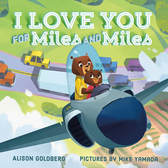 Alison Goldberg is the author of the picture book I Love You for Miles and Miles, illustrated by Mike Yamada (Farrar, Straus and Giroux, 2017). Before becoming a children’s writer, she worked for economic justice organizations and co-wrote the resource guide, Creating Change Through Family Philanthropy: The Next Generation (Soft Skull Press, 2007). To learn more about Alison visit her website at alisongoldberg.com/ To purchase I Love You for Miles and Miles go to: www.indiebound.org/search/bookkeys=i+love+you+for+miles+and+miles or www.amazon.com/I-Love-You-Miles/dp/0374304432/ref=sr_1_1?ie=UTF8&qid=1528207432&sr=8-1&keywords=i+love+you+for+miles+and+miles Signed copies are available through www.portersquarebooks.com/alison-goldberg 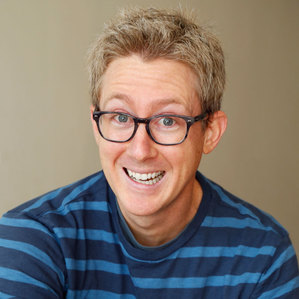 Guest Blog by Tim McCanna I wrote my first picture book manuscript in March of 2009. I still have the file in a Dropbox folder where I keep all of my story drafts. Seeing the file’s creation date made me realize that I’m approaching the ten year marker of when I decided to leap into children’s literature. Ten years is a long time to commit to anything. It’s plenty of time to experience failures and a few successes. You can surprise yourself one day and feel like you’re spinning your wheels the next. Is the 46-year-old me any wiser than the 36-year-old me? Maybe a little. I definitely have more gray hair. If I could give that young whippersnapper some friendly advice, here’s what I’d tell him… STEER CLEAR OF THE SLUSH PILE Let me save you some time and heartbreak, pal. Resist the slush pile submissions. You might as well go buy a lottery ticket or hunt for diamond rings at the beach. Yes, it can be tempting. And sure, lighting can strike. But especially when you’re starting out, the odds are not in your favor. You’ve got more productive things to do: NUMBER ONE: Embrace the industry.Participate! Join SCBWI, volunteer, read blogs and reviews, listen to kid lit podcasts, and attend conferences and workshops so you can gain a pro-level understanding of how all the pieces of this business fit together. NUMBER TWO: Make friends.Do anything it takes to join or form a critique group. Share your work and your experiences with these people. They will be your life raft in the turbulent kid lit seas. When you’re at a conference, turn to the people beside you and introduce yourself. Then ask them what they do. It really works. NUMBER THREE: When all else fails, stick to your craft.If you’re feeling lonely or unsuccessful or unsure what to do to move forward, allow yourself some quality time to pursue creativity. Write, sketch, brainstorm titles, whatever. Do all that and you’ll be too busy for the slush pile! Eventually, exciting opportunities will organically present themselves and propel your career forward in meaningful ways. CUT IT OUT WITH THOSE 700 WORD MANUSCRIPTS Hey man, a lot of your early manuscripts were too long. That’s okay. Don’t judge your work in those formative writing days. You have to put in the time to develop a sense of pacing and rhythm and structure. Get that first story out of your system and move on to the next one. While you write, read current published books and figure out why those manuscripts sold. Count the words on each spread, consider the passage of time between page turns, read out loud to a kid. At some point—after years of study and practice—something will click. You’ll see the difference between writing a story and crafting a picture book. You’ll actually treasure the editing and rewriting process. And when you figure out how to tell the same 700 word story in 285 words… that’s when the magic happens, buddy. PLAY WITH WORDS Your stories aren’t “leaping off the page” yet? Stretch those writing muscles. Trust your gut! Try something new! Be daring and innovative with letters, words, and phrases. You might discover a voice you didn’t know you had. You might even catch the attention of an editor with a fresh meter or distinctive grammatical style. Watersong started out as an experimental list of onomatopoeia strung together in rhyme. BOING! A Very Noisy ABC is a story told completely in alphabetical order. Recommended reading: Making the Alphabet Dance by Ross Eckler is an incredible book on wordplay. Could you write a novel without using the letter E? Somebody did! Good luck, you handsome thirty-something aspiring author. Making picture books is a slow process. The industry is slow. It just is. Don’t try to rush your craft or your career. Every day offers an opportunity to practice and learn, so focus on that. Getting published is a great goal, but the journey is where the real achievement happens. Tim McCanna is the author of Bitty Bot, Barnyard Boogie, Bitty Bot’s Big Beach Getaway, and Watersong, which is a New York Public Library Best Book for Kids and a National Council of Teachers of English (NCTE) Notable Poetry Book. His upcoming 2018 picture books include Jack B. Ninja, So Many Sounds, and BOING! A Very Noisy ABC. He lives in San Jose, California with his wife and two kids. Find Tim online at www.timmccanna.com. 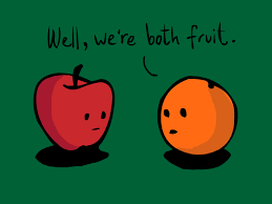 by Kelly Carey Looking for comparative or comp titles for your manuscript can sometimes seem counterproductive. Editors are looking for unique books and if you are able to provide a list of books just like yours, then how can you argue that your book is original? If you can find piles of books just like yours in tone, character, plot, theme and narrative quality then perhaps your manuscript lacks that special original spark. The hunt for comp titles can help you assess the originality of your work. No sense wasting time and energy revising and submitting a manuscript that will fall short of publication because editors will say it already sits on the shelf. But, beware. Readers will always crave books on certain topics and if you have added your own twist and voice to the manuscript, then your manuscript will be unique. See my blog http://www.24carrotwriting.com/-blog/find-your-own-bear for a discussion on originality. The trick with creating fresh manuscripts and finding comp titles is to locate books that share one common thread with your manuscript rather than the entire knitted fabric. When searching for comp titles consider the following hunting tactics:
It is important to know what you are looking for when you set out to find comp titles, but it is also helpful to know where to look. The best spots to find those elusive comp titles include:
You’ll be glad you did! Guest Blog By Kate Narita 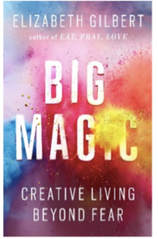 “The universe buries strange jewels deep within us all, and then stands back to see if we can find them… The often surprising results of that hunt-- that’s what I call Big Magic.” - Elizabeth Gilbert 24 Carrot Writers set one writing goal and one craft goal a month. In her January 4th post, Kelly Carey defines a craft goal as the following: “A craft goal needs to focus on the business side of writing.” People don’t often equate “the business side” of writing with magic, at least I never did. But as a result of 100 BOOK TRAILERS, that’s changed. I now realize that the journey of marketing can be as wonderful and as magical as writing.
After the euphoria of selling 100 BUGS! A COUNTING BOOK waned, reality set in. One of the things I had to do was create a marketing plan. Gulp! A marketing plan? I’m a teacher and a writer. I create lesson plans and stories, not marketing plans. I have an MFA, not an MBA. How do I create a marketing plan? Luckily, I’d taken an event planning class with Allison Pottern Hoch at The Writer’s Loft https://loftingsblog.com/2017/10/25/how-to-pitch-your-book-event/ during which many people had shared various marketing ideas. In addition, at the NESCBWI 2017 Conference, Janet Reynolds from The Blue Bunny Bookstore http://www.bluebunnybooks.com/ presented some extremely helpful marketing tips. Finally, Suzanne Kaufman, http://suzannekaufman.com/about/ the illustrator of 100 Bugs!, shared some of her past marketing plans with me. So, I had a small knowledge base. Now, I just had to move forward. Here’s where the business side of the Big Magic began. It sounds silly, but the number 100 makes me giddy. Maybe it’s a result of teaching elementary school for over ten years. After all, as many kindergartners will tell you, the best holiday after Christmas and your birthday, is the 100th day of school. So, I started thinking about what I could do with the number 100. That’s how I took the first step, I invited the treasure in. Well, it turns out I had just finished filming the book trailer for 100 BUGS!, which is another Big Magic story for another time. All of the book trailers I’d watched before filming mine, were scrolling through my head. Then, the Big Magic happened—a marketing idea sparked in my mind. Why not feature 100 book trailers, a different trailer for the first 100 days of 2018 and since BUGS has 100 in the title, release your book on the 100th day of the year? So, I proposed the idea in our marketing plan, and the 100 BUGS! team loved it. Great, right? GULP! Now, I had to do it. All the negative self-talk began. It sounded something like this: “Are you crazy? Who is going to want to be featured on your no-name blog? Do you even know 100 authors? Have 100 people even visited your site?” and so on. But over the years, I’ve learned to turn down the volume on those soul-killing thoughts, and turn up the volume on what is the next small step I can take to reach my goal. Second, I had to uncover the treasure chest. So, I shared my idea with my friend and mentor, April Jones Prince http://www.apriljonesprince.com/ . She liked the idea, but pushed me even further. “You need to tie those trailers into the classroom.” She was right once again. Featuring trailers wasn’t enough, I needed to create a resource for teachers to have at their fingertips. Useful activities educators could download without having to find time to read a teacher’s guide or sift through ineffective resources on the internet. Third, I had to find the time to crack the code. Time. I’m a full-time fourth grade teacher, I have two teenage sons, and my husband sometimes like to have a conversation with me that doesn’t revolve around who is picking up who at what time and who is coming home for fifteen minutes in between work and providing Uber service to walk the dog. Oh, and I try to write and exercise as many days as possible. So how in the world was I going to find the time to do this? Gratefully, Melanie Linden Chan of Epic Eighteen https://epiceighteen.weebly.com/ took some time out of her schedule to share tips about how to schedule blog posts. Eureka! I didn’t have to write a blog post every day. I could write ten blog posts on the weekend, and schedule them to be released on a daily basis. The task began to feel manageable. Fourth, I had to open the treasure chest. What treasures are in the kid lit world? So many. I reached out through social media, word of mouth, and personal connections to find them. As Elizabeth Gilbert writes, “The universe buries strange jewels deep within us all.” https://www.elizabethgilbert.com/ There had to be people who wanted to shine a light on their jewels, right? Yes! There were. Finally, it’s time to treasure the beauty of each and every jewel: Rubies: Celebrating the tremendous talent of the authors and illustrators in the kidlit world. Opals: New books that I can enjoy and share with my students. Sapphires: Meeting people I never would have met. Emeralds: Lessons I never would have thought of that I can share with my class. Topaz: Rejoicing in highlighting the success of people who have supported me over the years. Pearls: Providing resources to teachers, the hardest working people I know. Diamonds: Being showered with gratitude for simply shining a light on other people’s treasure chests. Looking back, I should have known marketing could be Big Magic. After all, everything in life can be magical, or it can be mundane. It’s a choice we have. Want marketing magic? Follow these steps:
So print out those 24 Carrot Writing Goal Worksheets posted on January fourth by Kelly Carey, and don’t look at the craft goal as some mundane task you have to complete in order to color in the carrot. No, write the craft goal, invite the treasure in and Big Magic will come your way. Keep your sparkly, orange gel pen nearby because you’ll feel sparkly when you color in that craft carrot! Craft on, Kate Narita Author of 100 Bugs! A Counting Book! Illustrated by Suzanne Kaufman coming June 12, 2018 https://goo.gl/7N2Jh3 www.katenarita.com Have you written or illustrated a book that’s easily accessed by elementary teachers and librarians through the public library system? If so, please go to www.katenarita.com and fill out her contact form so that she can feature your treasure. Please include the following information:
|
Peruse blogs for advice and tips from KidLit creatives.
Categories
All
Archives
April 2024
Click to set custom HTML
Click on the RSS Feed button above to receive notifications of new posts on this blog.
|
||||||||
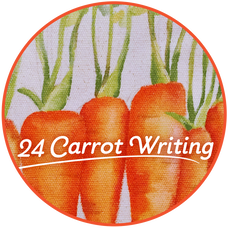
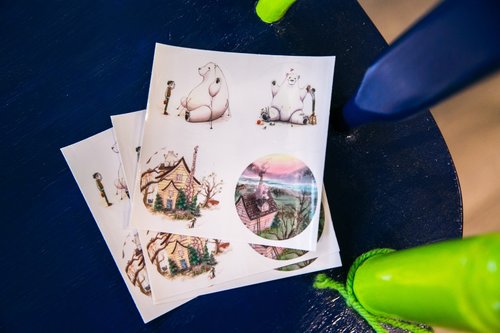
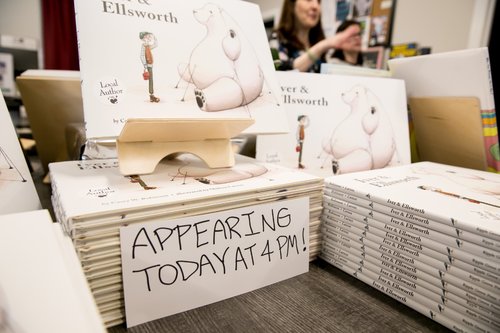
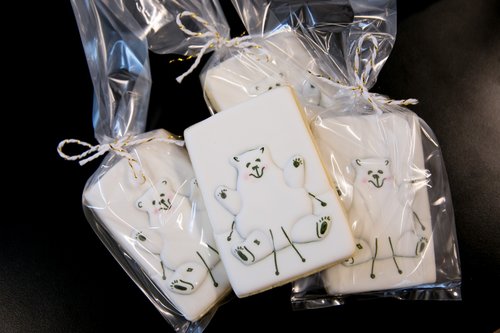
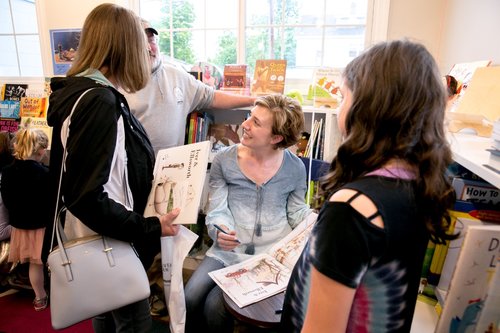
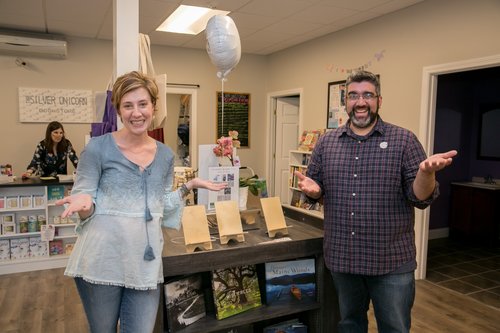
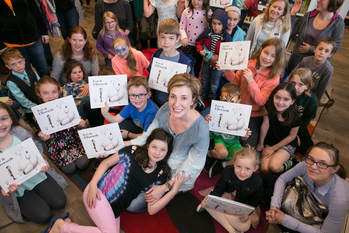
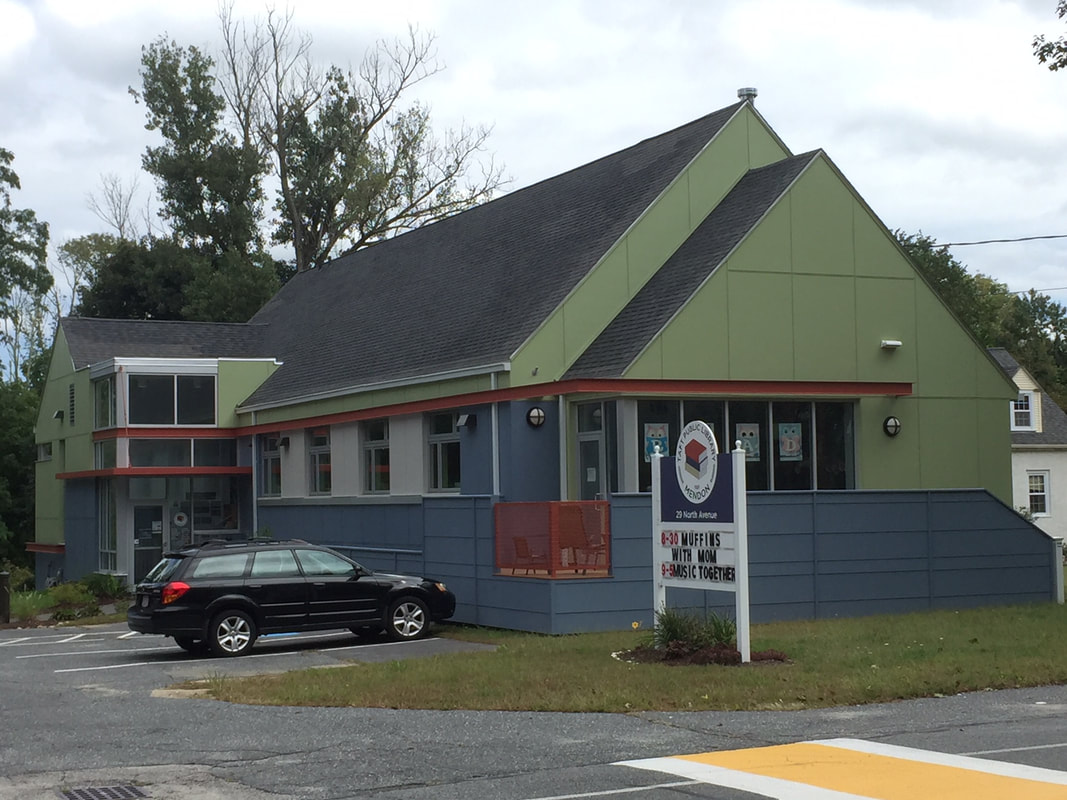
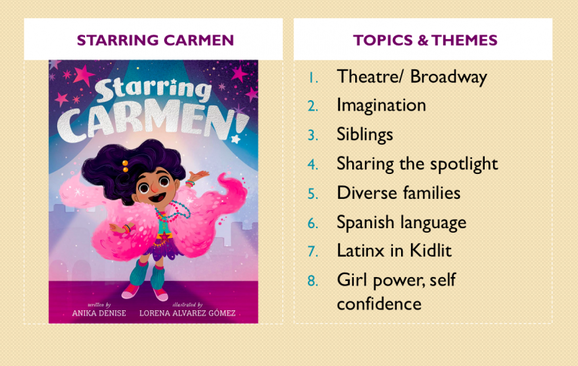
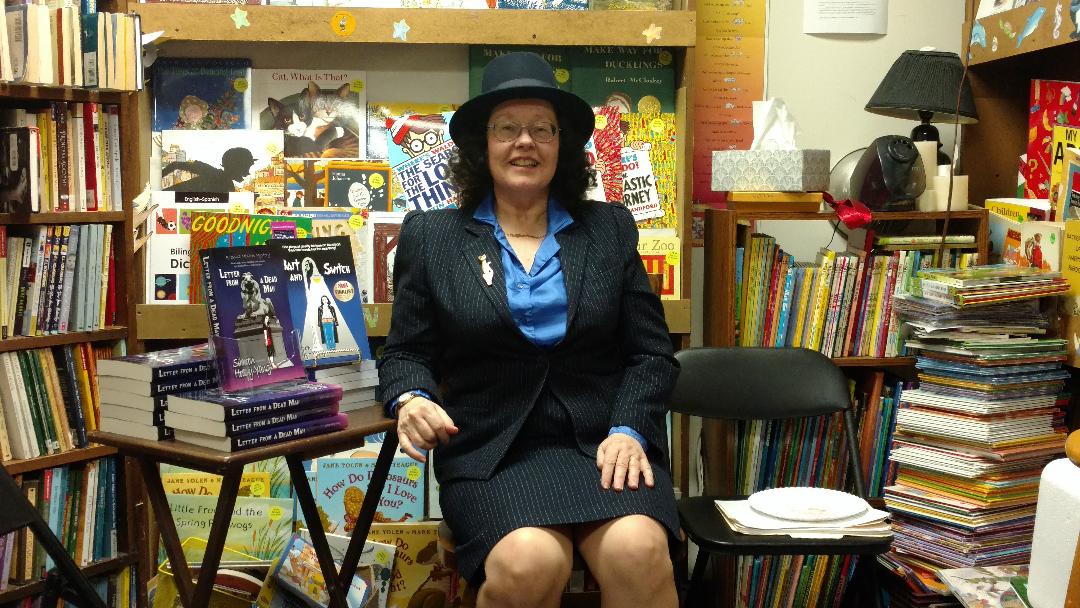
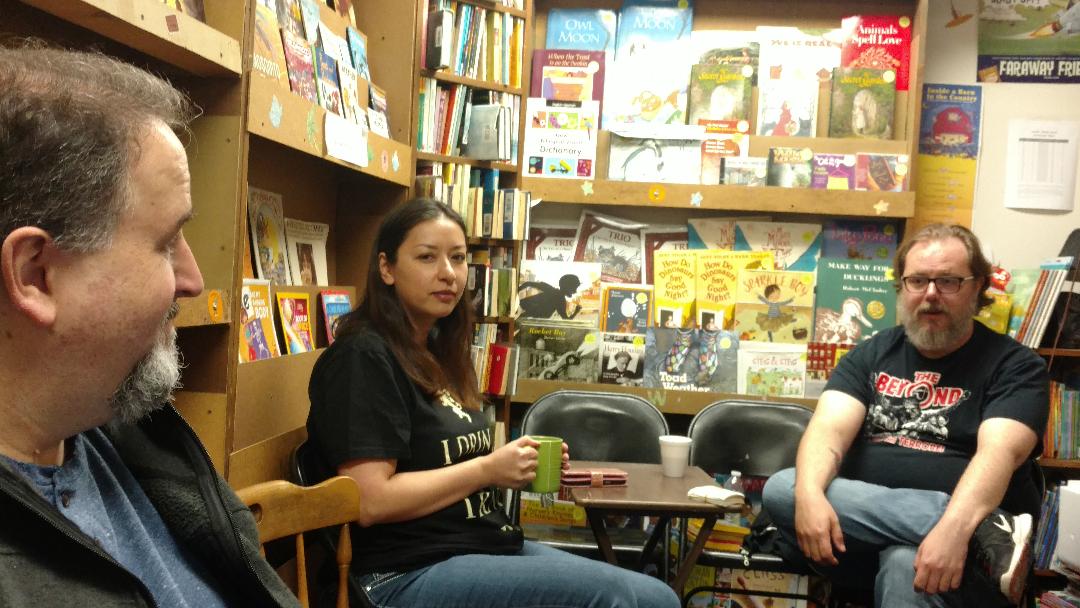
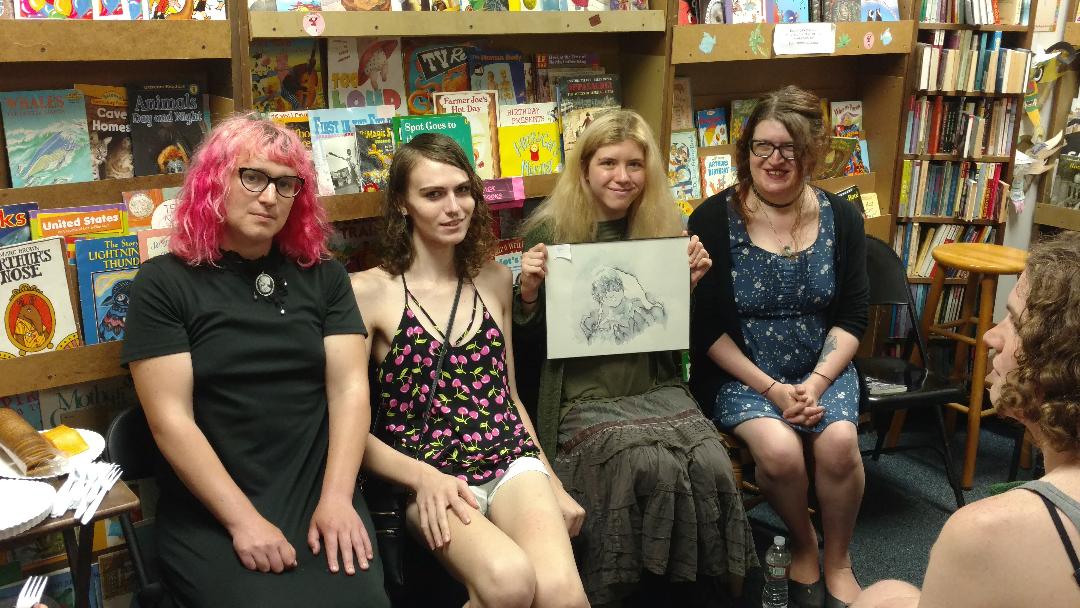
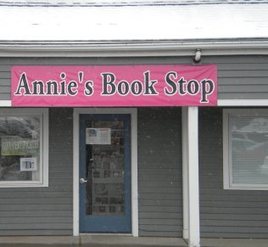
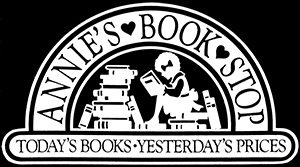
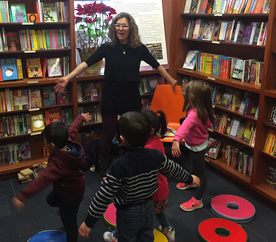
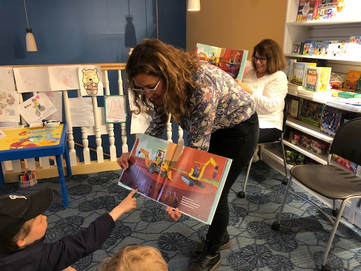
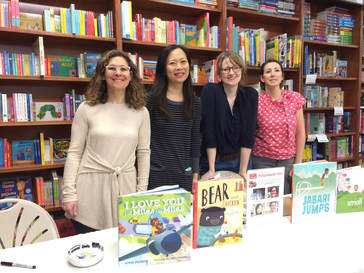
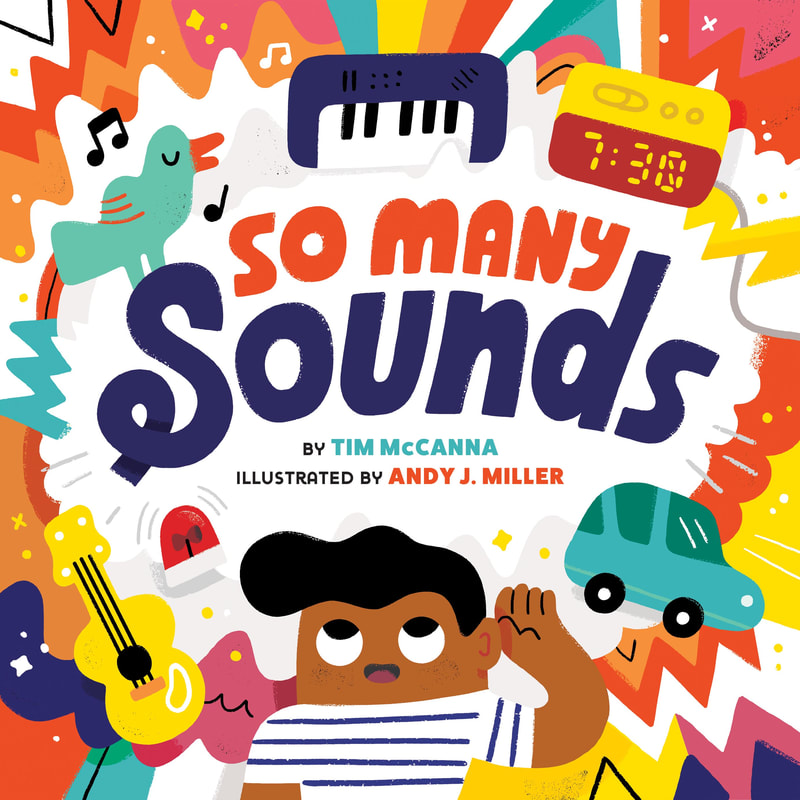

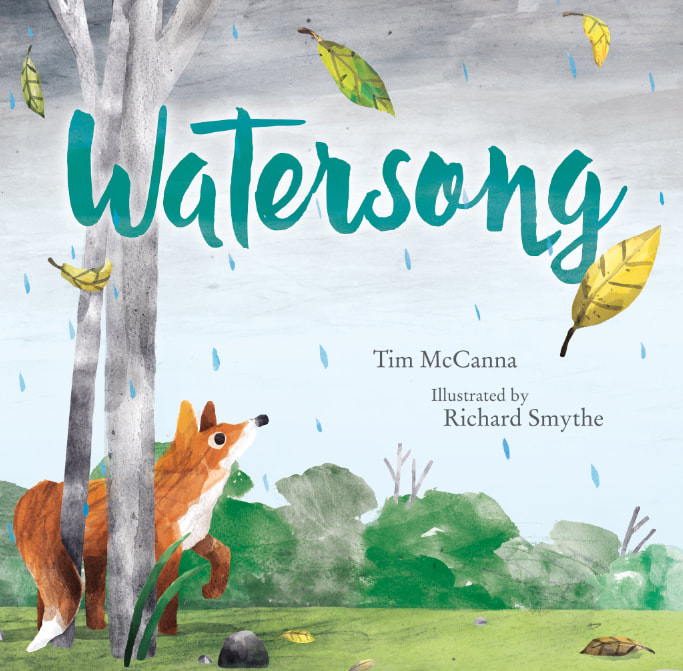
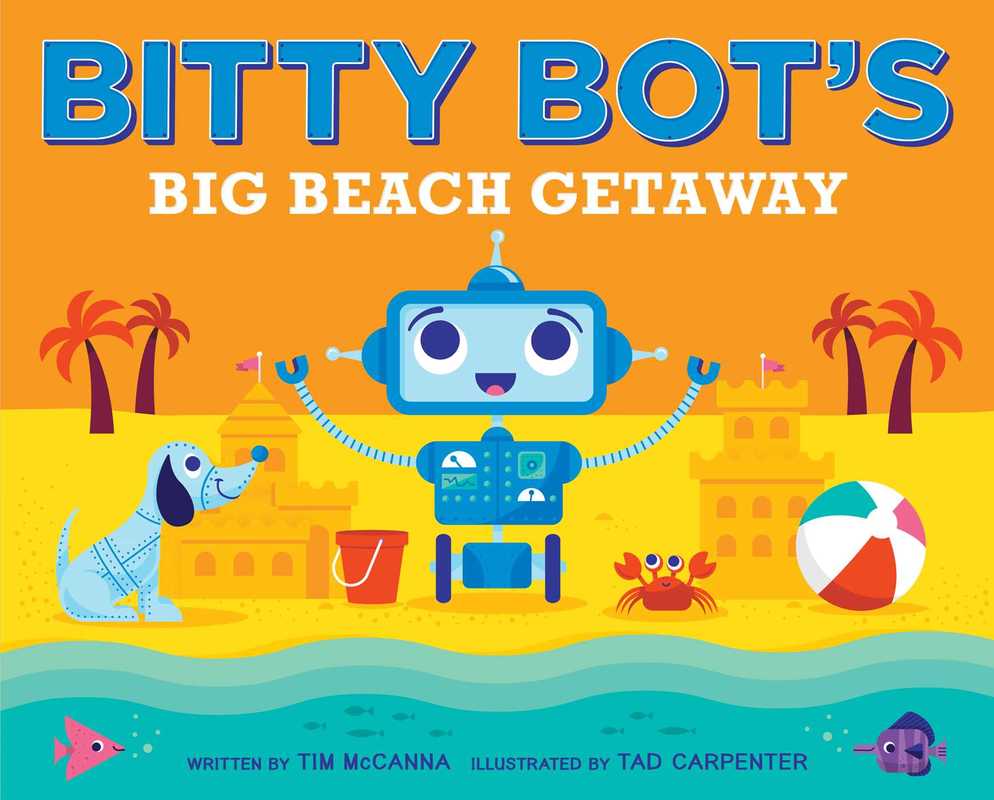
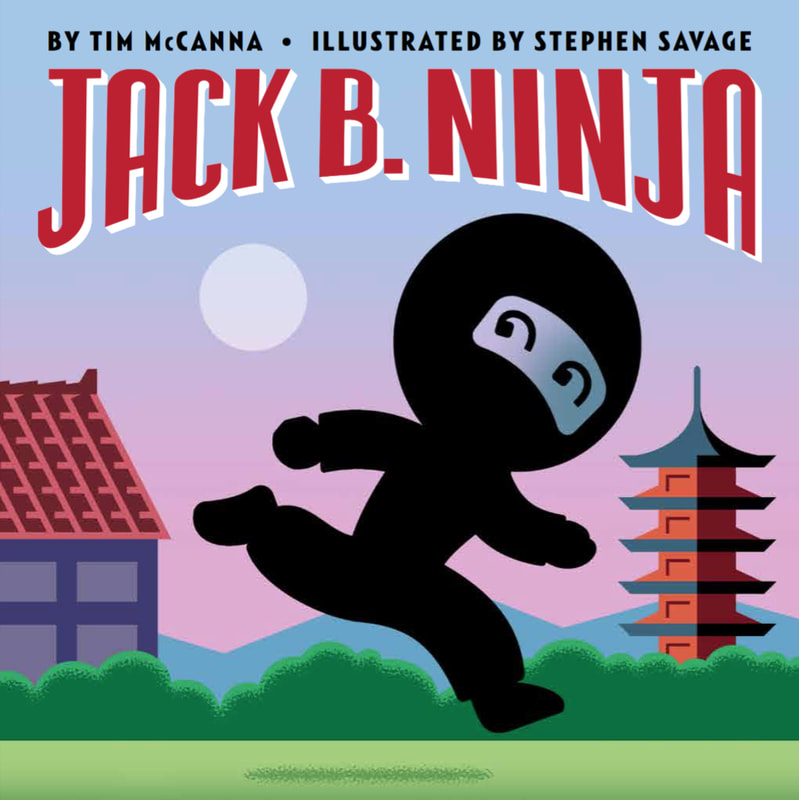
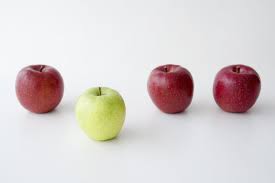
 RSS Feed
RSS Feed